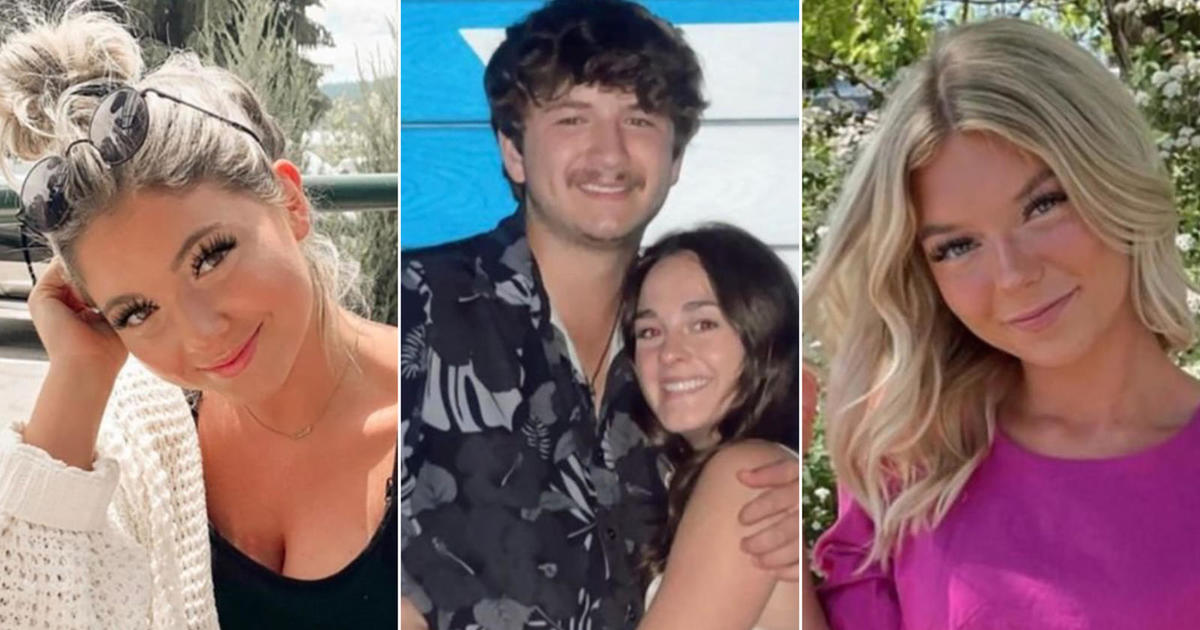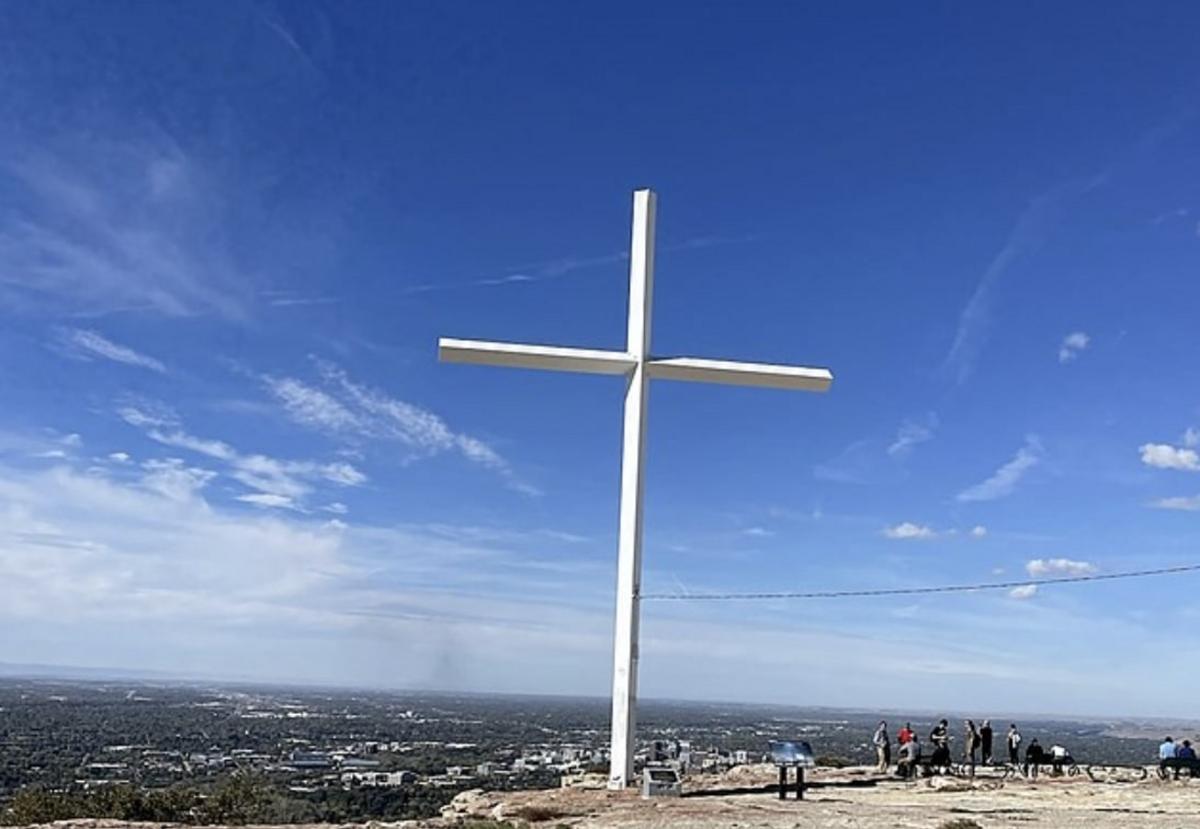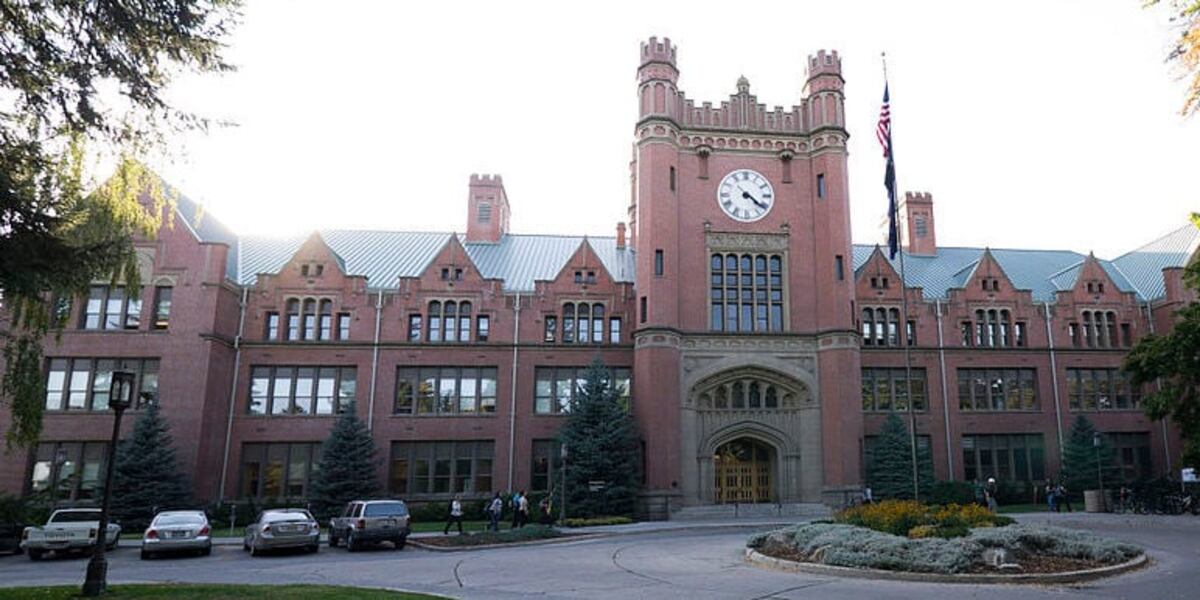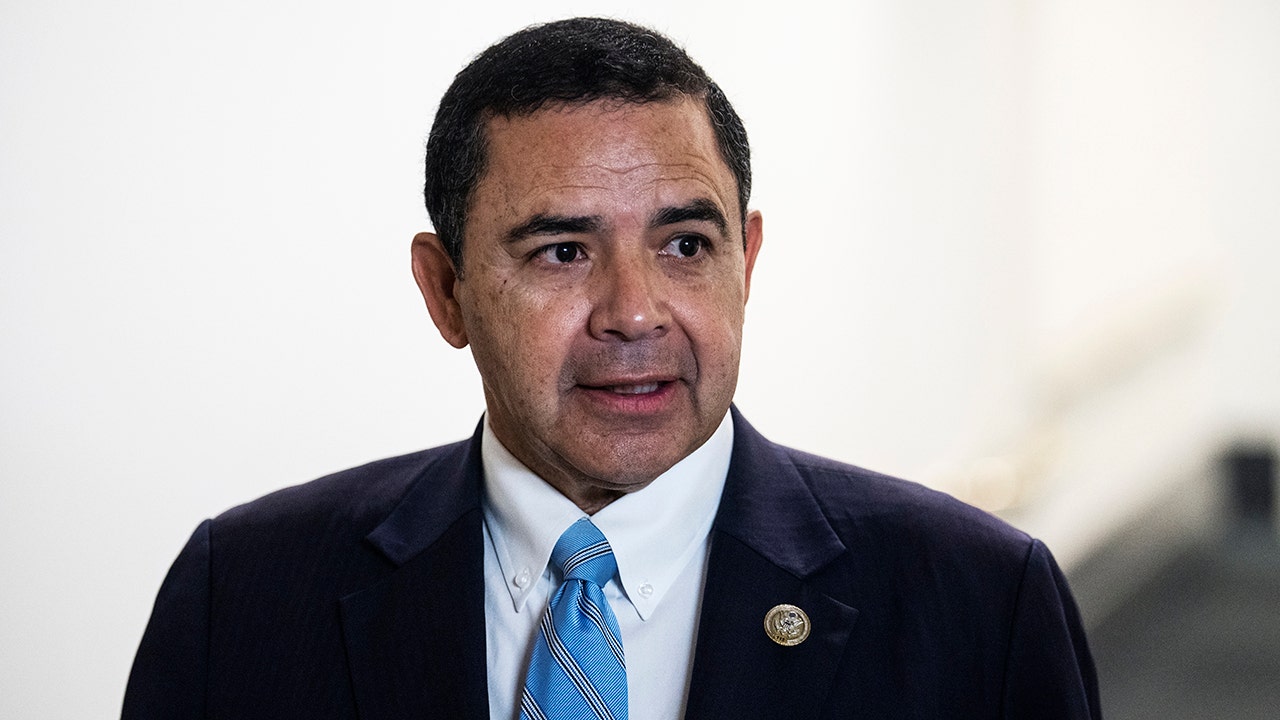Idaho
Bryan Kohberger’s lawyers can resume phone surveys of jury pool in case of 4 University of Idaho student deaths, judge rules

Defense attorneys for a man charged in the deaths of four University of Idaho students can resume phone surveys of potential jurors in the case, a judge has ruled.
Bryan Kohberger faces four murder charges in connection with the November 2022 stabbing deaths of Ethan Chapin, Xana Kernodle, Madison Mogen and Kaylee Goncalves. A judge has entered a not guilty plea on Kohberger’s behalf, and prosecutors say they will seek the death penalty if he is convicted.
Kohberger’s defense team hired a consultant to survey potential jurors living near the university about things they might have seen, heard or read about the case. The phone survey included questions about Kohberger’s arrest, the type of car he owns, DNA evidence and a knife sheath found near one of the bodies. It also included questions about whether the person being surveyed had watched true crime-style shows about the case or other things they might have heard.
When prosecutors became aware of the survey earlier this year, they asked 2nd District Judge John Judge to order the defense team to stop, arguing that the surveys violated a broad gag order the judge had issued in the case. Latah County Prosecutor Bill Thompson said some of the questions could prejudice people who could be called to serve as jurors when the case goes to trial.
In a ruling issued Friday, Judge said the surveys could continue as long as the questions do not violate his gag order. Most of the questions included information already publicly available through court documents, the judge wrote in the ruling, and so did not violate the order.
Other questions about rumors people might have heard or crime documentaries they might have seen about the case were not part of the public record when the surveys began, but they have since been debated and discussed in open court – which means they, too, are now part of the public record and can be included in future surveys, Judge said.
The bodies of the four University of Idaho students were found at a rental home near campus on Nov. 13, 2022. The home has since been demolished.
Police arrested Kohberger, 29 and then a graduate student at nearby Washington State University, more than six weeks later at his parents’ home in eastern Pennsylvania, where he had gone for winter break.
Last week, a court filing revealed that Kohberger’s lawyers plan to use cellphone tower data to show he was not at the location where the murders occurred. The documents allegedly providing an alibi for Kohberger stated he “was out driving in the early morning hours of November 13, 2022; as he often did to hike and run and/or see the moon and stars. He drove throughout the area south of Pullman, Washington, west of Moscow, Idaho including Wawawai Park.”
The document said a cell site location information expert will testify that cell tower data shows “Kohberger’s mobile device was south of Pullman, Washington and west of Moscow, Idaho on November 13, 2022; that Bryan Kohberger’s mobile device did not travel east on the Moscow-Pullman Highway in the early morning hours of November 13th, and thus could not be the vehicle captured on video along the Moscow-Pullman highway near Floyd’s Cannabis shop.”
A previous affidavit stated investigators had found cell tower data from that morning which showed Kohberger’s phone in Pullman around 2:47 a.m. the night of the murders, at which point it suddenly stopped connecting to the cell network, according to “48 Hours.” It was around this time surveillance video saw his car leave his apartment, “48 Hours” reported.
Jordan Freiman contributed to this report.

Idaho
This One Hike May be Idaho's Most Popular Summer Activity

For those who love the outdoors and everything it has to offer this Boise hike is perfect for you. The weather is getting colder so going on a hike this time of year feels great! It’s not too cold and it’s not too hot anymore so being adventurous is both fun and healthy.
Table Rock is one of the most well-known Boise hikes and it’s definitely for a reason. While it hurts to work your way up it is extremely rewarding once you get to the top. The hike is just a little over 3 miles, 1.5 miles to the top and 1.5 miles back to the bottom. This hike is great for families to go on and doesn’t require any expertise. It’s great for anyone who wants to get outside and be active before the snow starts to come. Grab your running shoes, your water bottle, and even your furry friends, and get to this hike for spring!
Table Rock Hike
One of Boise’s best hikes.
Gallery Credit: Shannon Buccola
The trail is a little rigid composed of rocks and dirt so it’s smart to keep your eyes on the trail while you are there. The way up is not too steep with the biggest climb being at the end but for the most part, even if you aren’t active this should still be manageable for you! The whole way up you have a great view of Boise and the mountains so even your water breaks will be joined with a view.
The way down is not bad either with only a few steep declines as long as you are going slow and steady you will be perfectly okay. As you go down it even helps to zig-zag down the trail just to be safe.
The best part is being at the top of the hike. The view is great and there’s even a giant cross at the very top! Table Rock has benches for you to sit and take a breather before you make your way back down again and just take in all of Boise below you. The pictures are amazing and you can see everything from downtown Boise to Boise State University!
Boise Spring Bucket List
Gallery Credit: Shannon Buccola
10 Easy Spring Hikes in the Boise Area with Breathtaking Views
Gallery Credit: Parker Kane
Idaho
Idaho Department of Environmental Quality revokes permit granted to Perpetua Resources

The Idaho Department of Environmental Quality Board of Environmental Quality Wednesday pulled back a permit granted last year to Perpetua Resources for its planned gold and antimony mine at Stibnite in Valley County.
The Nez Perce Tribe and multiple conservation groups had appealed the air permit, saying it allowed excessive dust-based toxic air pollution beyond the mine’s boundaries, threatening land users with carcinogens like arsenic. The main focus of the challenge was the permit’s “project-specific adjustment factor for ambient concentration.” State rules do allow an “acceptable risk” level of contaminants released into the air, depending on a variety of factors.
The permit DEQ granted Perpetua allowed greater emissions than generally allowed because of the way expected toxic air emissions (known as Ambient Air Concentration for Carcinogen, or AACC) were calculated over the 16-year predicted life of the mine versus a standard human life span, explained the Idaho Conservation League’s Will Tiedemann.
“It’s kind of like saying, if you were allowed so much arsenic to be exposed to in 70 years, let’s allow Perpetua to emit that much arsenic in just 16 years,” he said.
ICL was among the groups challenging the air permit, and have filed multiple challenges to the proposed mine over other environmental concerns.
DEQ board members ultimately agreed that pro-rating emissions in that way was not a safe calculation.
“DEQ’s project specific adjustment factor creates a new, higher level of cancer risk for 16 years,” said board Vice President J Randy MacMillan during Wednesday’s determination meeting. He said the approved permit did not fit within any measure of ‘acceptable risk’ identified in the state’s air quality rules.
MacMillan spoke at length Wednesday from a prepared statement regarding the board’s reasoning behind remanding that portion of the air permit. The board in March heard oral arguments over the issue, but deliberated in closed executive session before primarily relying on MacMillan to speak publicly.
“By applying the, what I would call short sighted, project-specific adjustment factor to the Stibnite Gold project,” he said. “DEQ created a misleading risk analysis that greatly underestimates the actual cancer risk.”
The board unanimously voted to pull the permit back to DEQ to be reworked based on that finding. It upheld several other aspects of the permit which had also been challenged by the outside groups.
It’s not clear how the decision could affect Perpetua’s planned site operations. The air permit is one of a handful of ‘major’ permits needed to fully operate, in addition to approvals through the federal National Environmental Policy Act (NEPA) review process. A Forest Service spokesman said the final environmental impact statement and draft record of decision for the Stibnite Gold project should be released this summer, with a final record of decision issued by the end of the year. Those dates are only estimates.
Prep work at Stibnite has been underway for several years already, including as of 2022, SuperFund-sponsored cleanup of some previous mining leftovers. Perpetua has long said their plan is to mine the area and fully remediate their impact and the mess previous companies left behind after decades of mining.
Perpetua could appeal the DEQ board’s decision in state court. In a statement, the company characterized the board’s action as remanding only a ‘narrow issue’ for additional review, and said it will work with DEQ to respond. But Perpetua reserved additional reaction until after it receives the full written order from DEQ May 9.
Tiedemann called the board’s decision a big win that validates opposition groups’ concerns about the project.
“It’s maybe not as glamorous or as romanticized as water,” Tiedemann said. “But harmful effects on air quality can be just as significant and harmful to human health and the environment as water pollution. And so I think it’s an important win.”
Idaho
An end to an Idaho lawsuit on grizzly bears raises questions about delisting

A lawsuit over the Idaho Department of Fish and Game’s killing of three grizzly bears in Eastern Idaho has been settled, with potential implications beyond the state’s borders.
A Montana-based nonprofit, Save the Yellowstone Grizzly, filed suit against Fish and Game and the federal government after the state killed a sow and two cubs near Tetonia in November 2021.
“They were not getting into the garbage. They were not threatening or harassing people,” said Graham Coppes, an attorney representing the advocacy group.
The lawsuit alleged violations of the Endangered Species Act, including claims that the U.S. Fish and Wildlife Service (USFWS) illegally authorized the killing of the sow and one cub and that Idaho killed the second cub without USFWS approval. The federal agency had a potential relocation site for the cub in mind.
In response, Idaho Fish and Game acknowledged that the federal agency had concerns about killing the bears and had urged the state to pursue non-lethal options. Idaho said it attempted to dart and trap the remaining cub as part of these efforts.
However, the state said that the USFWS “did not make it clear to Idaho that [it] would consider lethal removal of the second young bear to be unauthorized if non-lethal methods were unsuccessful.”
According to Fish and Game, the bears, which had recently been relocated from Gardiner, Mont., were wandering near a rural subdivision and posed a risk to public safety.
Additionally, Idaho filed a counterclaim against the U.S. Fish and Wildlife Service, saying the state shouldn’t be subject to the Endangered Species Act for these bears, which it contends don’t qualify for protection.
“Because they have recovered,” said Kathleen Trever, a deputy attorney general. “And, the entity that is on the list does not meet the definition of a species that is [protected].”
Grizzly bears have been listed as “threatened” under the ESA since 1975. A year ago, the federal government rejected Idaho’s petition to delist grizzly bears across the contiguous U.S., saying it “failed to present any credible scientific” information. At the same time, it moved forward with other petitions to consider delisting in two specific recovery areas, including the Greater Yellowstone Ecosystem.
However, the settlement in this case could effectively open the door to delisting across the lower 48 once again. Under the agreement, the USFWS will revise or remove protections for the bears by Jan. 31, 2026.
“This action will allow the Service to evaluate the listed entity for grizzly bears in the lower 48 within a modern ESA framework,” USFWS spokesperson Joe Szuszwalak wrote in an email, “including consideration of updated science, additional information, and policies enacted since the entity was listed in 1975, including the Service’s 1996 policy for evaluating distinct population segments for listing, delisting, and reclassification under the ESA.”
The process will involve proposed rulemaking and a public comment period.
The fact that USFWS will now reconsider Idaho’s delisting request concerns some conservation advocates, including Kristine Akland, a senior attorney with the Center for Biological Diversity, who was not involved with the case.
“It’s an incredibly unfortunate result of this lawsuit,” Akland said.
Still, Coppes, the attorney for Save the Yellowstone Grizzly, noted that the USFWS could end up making only a minimal change to the ESA listing. It’ll still need to follow the science, he said. Also, under the settlement, Idaho confirmed that it would seek an agreement with the USFWS before lethally removing any ESA-listed bear.
Meanwhile, federal officials announced plans last week to reintroduce grizzly bears to North Cascades National Park in Washington, and they are considering reintroduction efforts in the Bitterroot Recovery Area, which includes parts of Montana and Idaho.
Find reporter Rachel Cohen on Twitter @racheld_cohen
Copyright 2024 Boise State Public Radio
-

 News1 week ago
News1 week agoLarry Webb’s deathbed confession solves 2000 cold case murder of Susan and Natasha Carter, 10, whose remains were found hours after he died
-

 News1 week ago
News1 week agoFirst cargo ship passes through new channel since Baltimore bridge collapse
-

 World1 week ago
World1 week agoHaiti Prime Minister Ariel Henry resigns, transitional council takes power
-

 World1 week ago
World1 week agoSpanish PM Pedro Sanchez suspends public duties to 'reflect'
-

 World1 week ago
World1 week agoUS secretly sent long-range ATACMS weapons to Ukraine
-

 News1 week ago
News1 week agoAmerican Airlines passenger alleges discrimination over use of first-class restroom
-

 Movie Reviews1 week ago
Movie Reviews1 week agoHumane (2024) – Movie Review
-

 Education1 week ago
Education1 week agoVideo: Johnson Condemns Pro-Palestinian Protests at Columbia University




















